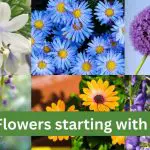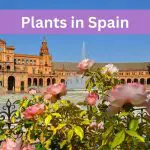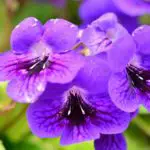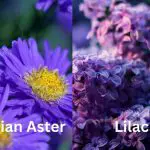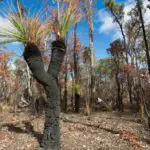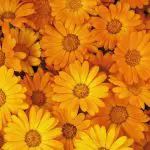Last Updated on March 2, 2023 by Derek
What Flowering Plants Grow in the Desert?
It is easy to assume that no plants would survive in the desert due to the harsh climatic conditions. On the contrary, hundreds of drought-resistant flowering plants‘ adaptations allow them to tolerate these difficult desert conditions.
These plants range from trees, bushes and shrubs, succulents, and cacti. Most of them will remain dormant during the dry period but brighten up with beautiful colors after every seasonal rain.
Below are some lovely desert flowering plants.
- Cactus (Cactaceae)
- Purple Texas sage (Leucophyllum frutescens)
- Tumbleweed (Salsola tragus)
- Apricot mallow (Sphaeralcea ambigua)
- Arizona poppy (Kallstroemia grandiflora)
- Trumpet bush (Tacoma Stans)
- Muhly grass (Muhlenbergia capillaris)
- Mojave aster (Xylorhiza tortifolia)
- Desert Sand Verbena (Abronia villosa)
- Joshua tree (Yucca brevifolia)
Which Is the Most Common Flower in the Desert?
Barrel cactus (Echinocactus grusonii) is the most common plant across all the deserts in the world. It is native to Mexico, south-central Arizona, and Sonora.
The stem is pale green and barrel-shaped with protruding ribs and golden spikes. It bears about 5 cm-inch bright yellow blooms and mainly grows along gravely slopes, desert washes, and under desert canyons.
Here are some facts about the golden barrel cactus.
- A mature plant is 2 feet tall and 2 to 3 feet wide
- It can grow well in well-drained sand or loam with a neutral, acidic, or alkaline pH
- It requires little water and minimal maintenance
- They grow facing south or southwest to enable the spikes to protect the mother plant from the desert sun
- It is succulent to reduce water loss and survive in the desert
- It is tolerant to deer, drought, rabbits, dry soil, and rocky soil
- It is ideal for desert gardens, rocky gardens, and Mediterranean gardens. You can also grow it as a decorative plant in containers
| Common Name | Botanical Name | Soil pH Range | Soil Type | Sunshine | Growing Zones |
|---|---|---|---|---|---|
| Barrel Cactus | Echinocactus grusonii | 6.0 – 7.5 | Well-draining | Full sun | 9-11 |

Yellow Desert Flowers
With the hot conditions in the desert, it might be surprising to see the beautiful yellow flowers in different times. It means there are plants adapted to such climates. Check out some gorgeous yellow flowers across deserts, including Arizona’s Sonoran Desert.
- Shrubby Indian Mallow (Abutilon incanum)
- Golden flower century plant (Agave chrysantha Peebles)
- San Felipe Dogwood (Adenophyllum porophylloides)
- Thurber’s Desert Honeysuckle (Anisacanthus thurberi)
- Pineland Dwarf Mistletoe (Arceuthobium vaginatum ssp.)
- Arizona Beggarticks (Bidens aurea)
- Wholeleaf Indian Paintbrush (Castilleja integra)
- Desert marigold (Baileya multiradiata)
- Glandular Cape Marigold (Dimorphotheca sinuata)
- Desert rock pea (Acmispon Rigidus)
White Desert Flowers
Despite the unpleasant climatic conditions of the desert, you can still see lovely flowers in different seasons. Here are some white desert flowers.
Sego lily (Calochortus nuttallii)

It is a gorgeous perennial bulb that flaunts three large flowers growing on slender stems in the desert. It is native to the dry regions of west America and is the state flower of Utah. The 3-inch flower has three petals and a yellow base.
Its grey-green basal leaves wither as the season progresses. It is drought tolerant. It has a mature height of 25 60 cm and a width of 15 to 22 cm. It blooms from late spring to late summer.
| Common Name | Botanical Name | Soil pH Range | Soil Type | Sunshine | Growing Zones |
|---|---|---|---|---|---|
| Sego Lily | Calochortus nuttallii | 6.0 – 8.0 | Sandy, well-draining | Full sun to partial shade | 5-9 |
Chickweed (Stellaria media)

It is a winter annual with green teardrop-shaped leaves that are hairy on the underside and hairless on the upper. It has light green horizontal branching stems with a fur line on either side. It bears tiny flowers with five white petals. It grows mainly in meadows, wastelands, and open areas.
| Common Name | Botanical Name | Soil pH Range | Soil Type | Sunshine | Growing Zones |
|---|---|---|---|---|---|
| Chickweed | Stellaria media | 6.0 – 7.0 | Moist, well-draining | Partial shade | 2-7 |
Common zinnia (zinnia)

It is an annual shrub native to the hot regions of South America, southwestern United States, and Mexico. It grows as perennial in zones 9 to 11. When growing in gardens, they require well-drained soil with 5.5 to 7.5 pH.
The plant grows 1-4 feet tall and spreads 12-18 inches. It bears flowers in shades of white, pink, red, orange, lavender, purple, or yellow from late spring through the first frost.
| Common Name | Botanical Name | Soil pH Range | Soil Type | Sunshine | Growing Zones |
|---|---|---|---|---|---|
| Common zinnia | Zinnia elegans | 5.5 – 7.5 | Well-draining | Full sun | 3-10 |
Milkweed (Asclepias)
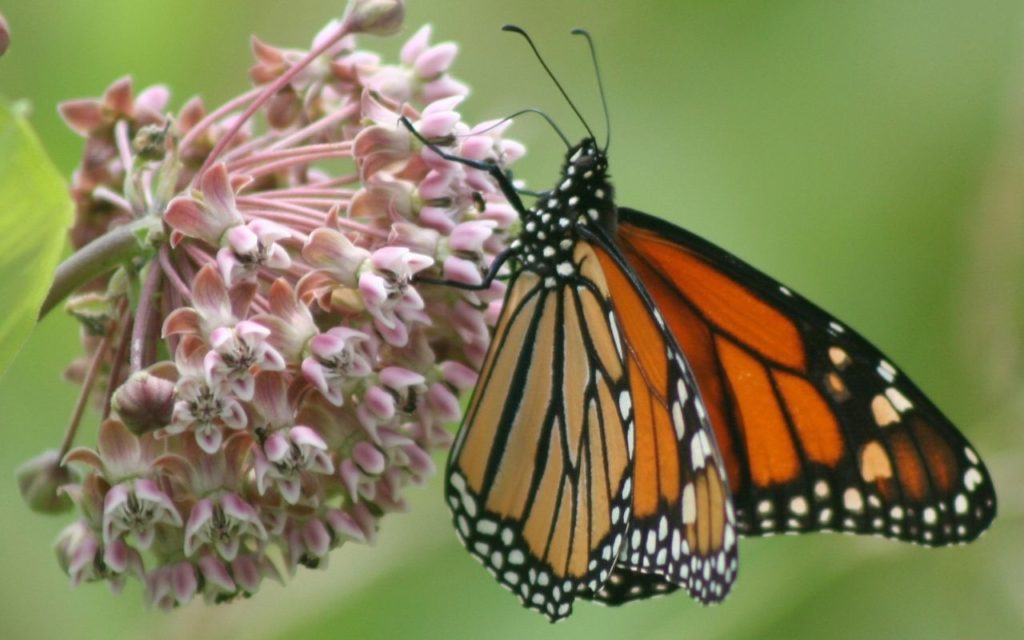
Milkweed is a deciduous flowering plant with over 100 species. The poke milkweed (Asclepias exaltata) is famous for its umbels of white to pink blooms in summer. It is native to North America.
It keeps growing in its natural habitats because its seed pods split open, releasing seeds that grow into new plants. It is valuable in North America for the survival of monarch butterflies, whose population is critically diminishing.
| Common Name | Botanical Name | Soil pH Range | Soil Type | Sunshine | Growing Zones |
|---|---|---|---|---|---|
| Common Milkweed | Asclepias syriaca | 6.0 – 7.0 | Well-draining, sandy | Full sun to partial shade | 3-9 |
| Butterfly Weed | Asclepias tuberosa | 5.5 – 7.5 | Well-draining, dry | Full sun | 3-9 |
| Swamp Milkweed | Asclepias incarnata | 6.0 – 7.5 | Moist, well-draining | Full sun to partial shade | 3-9 |
Tansy Aster (Machaeranthera)
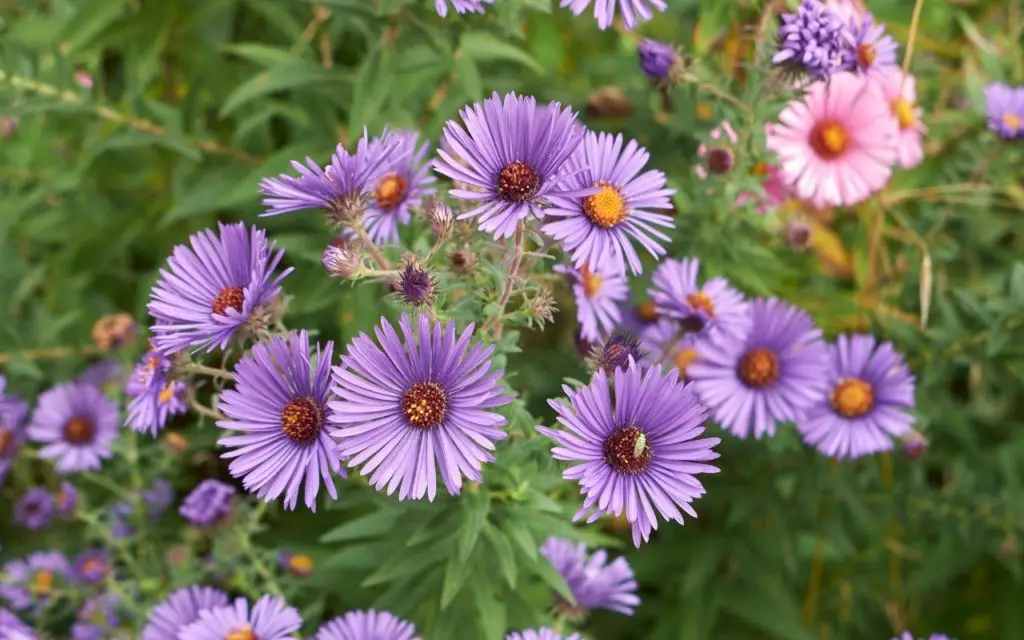
It is an annual or biennial desert flower in the daisy family. It displays clusters of delicate blooms about 1 to 2inches wide. They are ideal for rocky gardens, banks, and slopes and like well-drained soil with a neutral, acidic, or alkaline pH. They appreciate full sun but can withstand partial shade. They blossom in late spring, summer, and fall.
| Common Name | Botanical Name | Soil pH Range | Soil Type | Sunshine | Growing Zones |
|---|---|---|---|---|---|
| Tansy Aster | Machaeranthera tanacetifolia | 6.0 – 7.5 | Well-draining, sandy | Full sun | 4-8 |
Blue Desert Flowers
While blue flowers are rare in the floral world, there are unique plants in the deserts with blue blooms. The following are some incredible blue desert flowers.
| Common name | Scientific name | Facts |
| Desert bluebells | Phacelia campanularia | It is native to Southern California deserts and flourishes in full sun and dry soil. The blue flowers appear in early spring. |
| Chilean potato vine | Solanum crispum | It grows in warm climates of the tropics and deserts. It displays deep blue blooms from April to October. |
| Sonoran Giant Hyssop | Agastache wrightii | It is a perennial shrub native to Arizona. It produces blue to violet-blue flowers after the summer monsoon rains begin. |
| Cape leadwort | Plumbago auriculata | It is native to Cape Plumbago in south Africa. It bears lovely light blue to brilliant sky-blue flowers from May to October. |
| Poorman’s Weatherglass | Anagallis | It thrives in pastures, wastelands, and all difficult sites. It displays blue flowers in spring, though it can take longer to start flowering. |

Purple Flowering Desert Plants
Nothing looks livelier than gorgeous colors in an almost bare desert, like the purple bushes in Arizona, which are purple Texas sage. Desert plants flourish in hot arid, and semi-arid climatic conditions where they are adapted to survive with minimal rainfall.
The desert habitats are mainly rocky or sandy, with less moisture and sometimes extremely high temperatures. Not many plants can grow in such conditions. Here are some flowering plants with purple flowers that thrive in the desert.
- Desert sage (Salvia dorrii)
- Indigo bush (Amorpha fruticosa)
- Desert ironwood plant (Olneya tesota)
- Turpentine broom (Thamnosma montana)
- Ice plant (Aizoaceae)
- African lily (Agapanthus africanus)
- Mexican blue sage (Salvia chamaedryoides)
- Mealycup sage (Salvia farinacea)
- Texas Mountain Laurel (Dermatophyllum secundiflorum)
- Pasque Flower (Pulsatilla vulgaris)
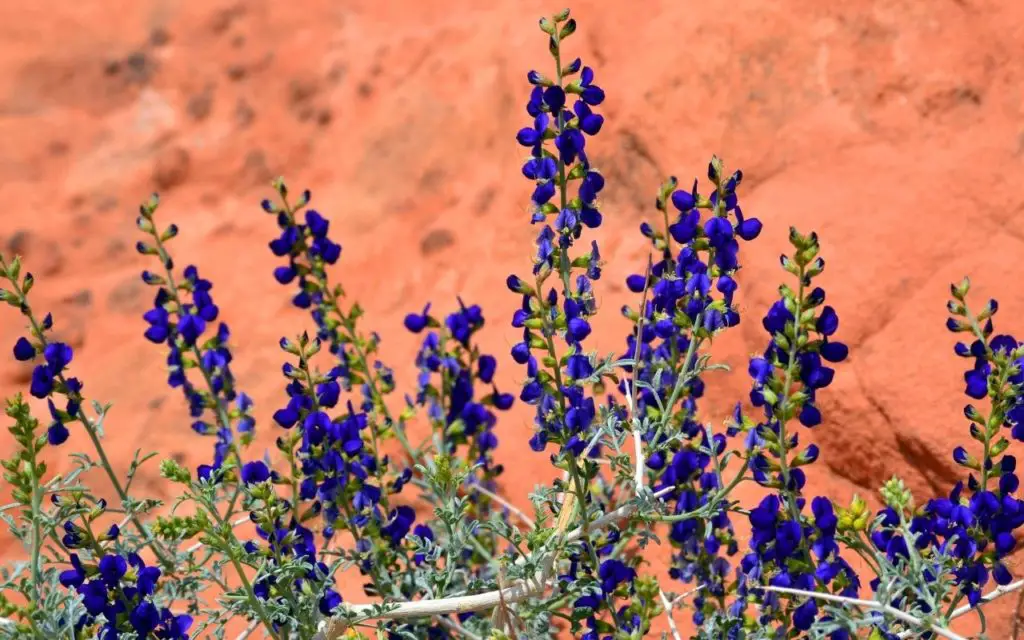
| Common Name | Botanical Name | Soil pH Range | Soil Type | Sunshine | Growing Zones |
|---|---|---|---|---|---|
| Blue Sage | Salvia azurea | 6.0 – 8.0 | Well-draining | Full sun | 5-9 |
Rare Desert Flowers
The Night-Blooming Cereus (Epiphyllum Oxypetalum) is the rarest and most curious desert flower. It blooms one night a year and gets people to gather in the remote desert sites to witness its appearance. The fantastic flower is native to South America but spreads across the desert towards the southwest, particularly in Arizona regions.
It takes approximately seven years for this plant to mature and bloom. It bears about 20 flowers at one time, and a single flower is about 7 inches across. When it is time to bloom, the flower starts to open at around 8 or 9 p.m. and expands fully by around midnight.
The blooms wilt and die when the sun starts rising at the horizon. Anyone who wants to witness its opening times it between July and October, when the weather is warmest.

| Common Name | Botanical Name | Soil pH Range | Soil Type | Sunshine | Growing Zones |
|---|---|---|---|---|---|
| Night-Blooming Cereus | Epiphyllum oxypetalum | 6.0 – 7.0 | Well-draining, organic | Partial shade | 10-11 |
What Flower Grows Best in the Desert?
Not many plants can survive arid conditions, but there are those best adapted to survive. These plants use behavioral mechanisms and physical characteristics to withstand the aridity and extreme heat, just like desert animals.
Xerophytic plants adapt by altering their physical features. Heat is one of the significant desert challenges, and few plants can stand the conditions.
Below are some of the best plants for the desert heat.
- Lemon verbena (Aloysia citrodora)
- Lantana plant (Lantana camara)
- Mexican aster (Cosmos bipinnatus)
- Geranium (Pelargonium)
- Sage plants (Salvia)
- Stonecrop (Sedum)
- Desert lily (Hesperocallis undulata)
- California poppy (Eschscholzia californica)
- Aloe vera plants (Aloe barbadensis miller)
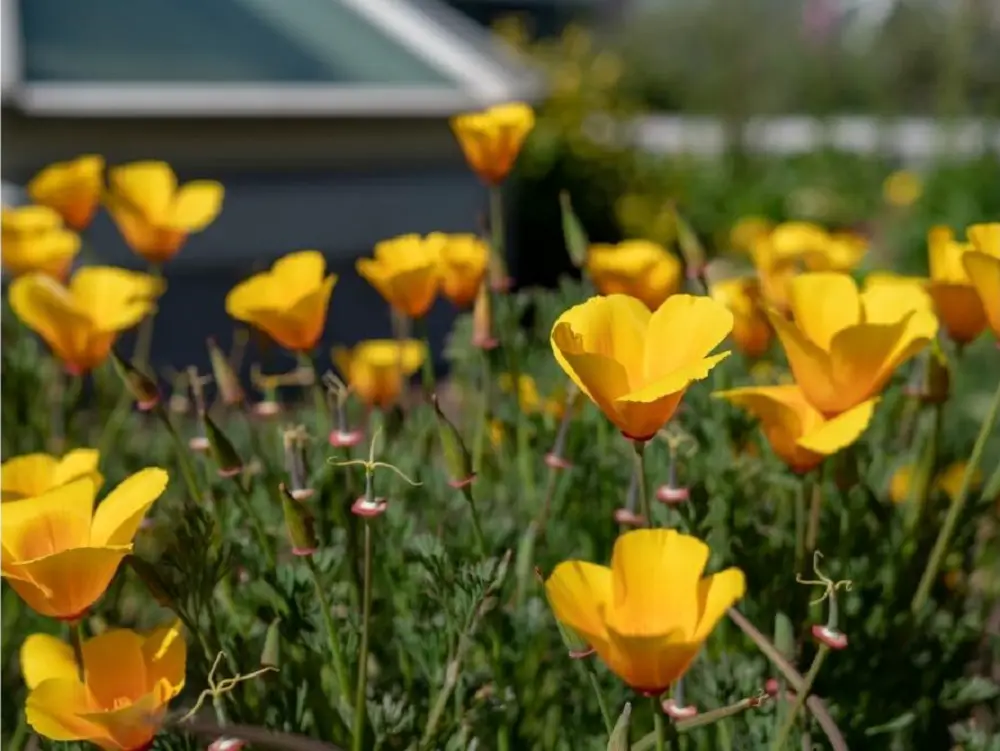
| Common Name | Botanical Name | Soil pH Range | Soil Type | Sunshine | Growing Zones |
|---|---|---|---|---|---|
| California Poppy | Eschscholzia californica | 6.0 – 7.5 | Well-draining | Full sun | 6-10 |
What Is the Prettiest Desert Flower?
California poppy and desert marigold are among the most beautiful desert flowers. The showy desert marigold is a short-lived perennial or biennial that bears mounds of daisy-like flowers that almost resemble an impressive bright solid yellow. The grey foliage of nearly leafless stems adds to its beauty from where the flowers rise.

| Common Name | Botanical Name | Soil pH Range | Soil Type | Sunshine | Growing Zones |
|---|---|---|---|---|---|
| Desert Marigolds | Baileya multiradiata | 6.0 – 8.0 | Well-draining, sandy | Full sun | 7-10 |
The whole plant is grey with few leaves at the base. Each flower head rests on top of a single stem. They form dense strips of beauty over long stretches of desert roads. They bloom from summer to fall.
California poppy is a naturally seeding desert wildflower native to California. It is the state flower and a symbol of the Golden State due to its beauty. These annuals flaunt grey-green foliage that is feathery and bright 4-petaled bright orange blooms.
The flowers can sometimes appear in shades of cream or yellow in the wild. Garden varieties come in shades of pink and red. The flower-bearing stems are 8 to 12 inches long.
Flowering start in mid-march but can last up to May. A single flower lasts a few days, but the blooming season lasts all summer. California poppies are common in Arizona and California deserts.
FAQ relating to Desert Flowers
What are some common types of desert flowers?
Some common types of desert flowers include the Desert Marigold, Brittlebush, Penstemon, and Joshua Tree. These flowers have adapted to thrive in hot and arid desert climates and often have unique characteristics such as deep root systems, drought tolerance, and bright colors to attract pollinators.
What is the best way to care for desert flowers?
Desert flowers typically thrive in well-draining soil with plenty of sunlight. It’s important to avoid overwatering and to allow the soil to dry out between watering sessions. Fertilizing with a balanced fertilizer during the growing season can also be helpful. Be sure to research the specific needs of the type of desert flower you are growing as care can vary between species.
When is the best time to plant desert flowers?
The best time to plant desert flowers is typically in the spring or fall, when temperatures are mild and there is less risk of extreme heat or cold. Be sure to research the specific timing for the type of desert flower you are growing, as some may have different planting requirements.
Can desert flowers be grown in containers?
Yes, many types of desert flowers can be grown successfully in containers. Be sure to use a well-draining soil mix and a container with drainage holes. Container-grown desert flowers may require more frequent watering than those planted in the ground, as the soil in containers can dry out more quickly.

